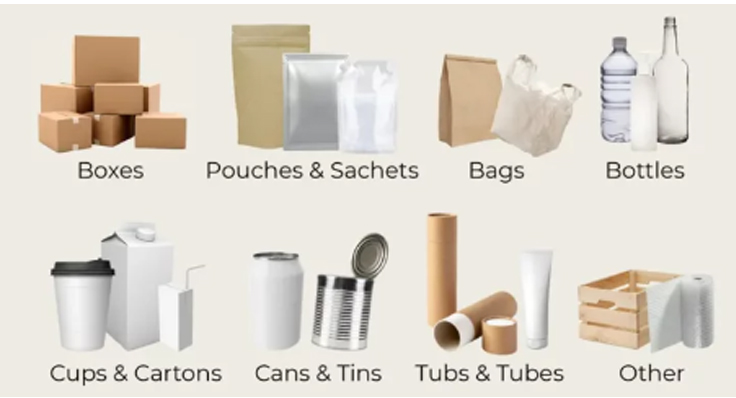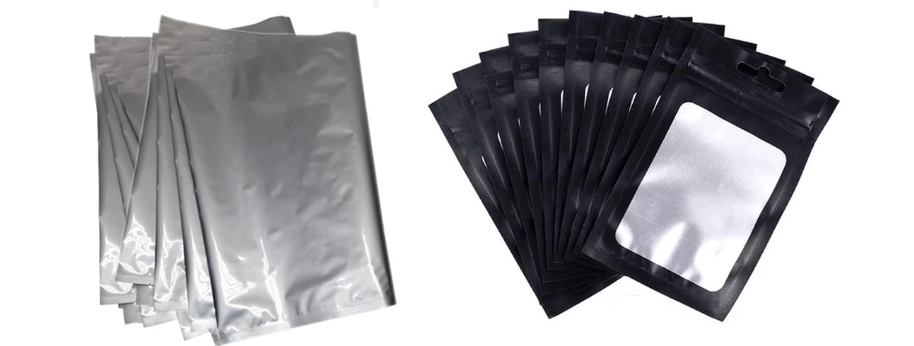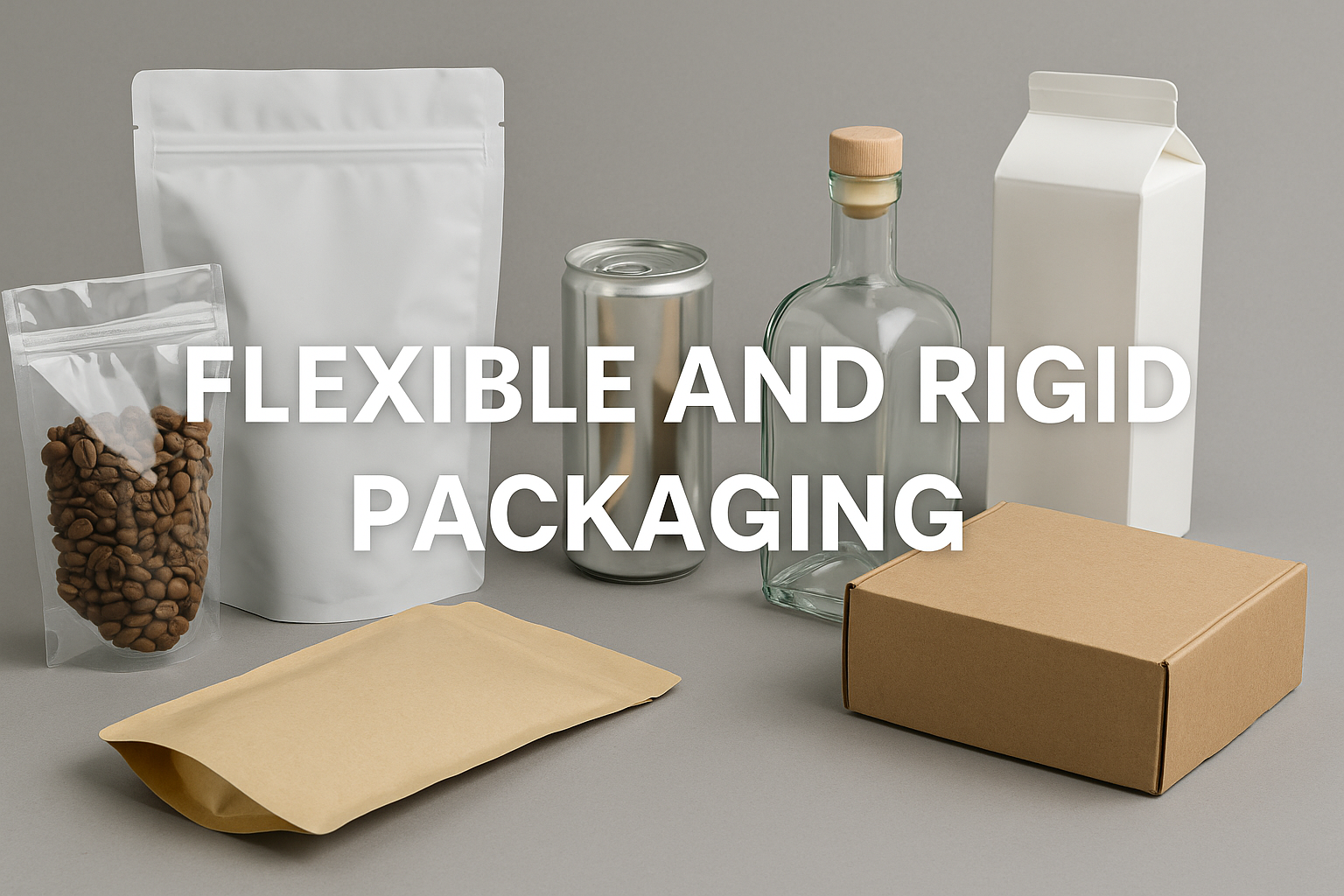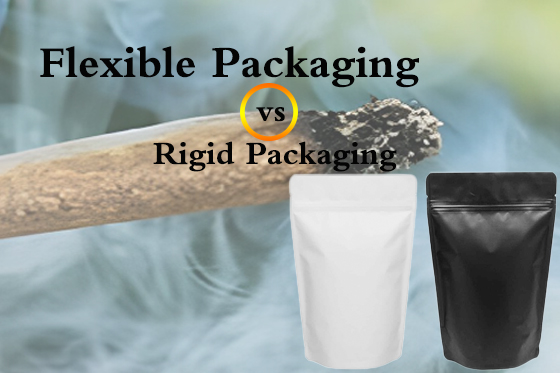I.Flexible Packaging vs. Rigid Packaging
1.1 Definition:
Flexible Packaging: Made using foldable and moldable materials such as paper, plastic, metal foil, and composite materials. It is characterized by being lightweight, easy to transport, and cost-effective.
Rigid Packaging: Made using sturdy, non-deformable, and durable materials such as glass, metal, plastic, and cardboard. It is characterized by being robust, durable, and easy to store.
1.2 Application Scenarios:
Flexible Packaging: Widely used in industries like food, beverages, cosmetics, and pharmaceuticals. For example, instant noodles, biscuits, candies, and beverages are typically packaged in flexible packaging.
Rigid Packaging: Primarily used in industries like food, beverages, and industrial products. For example, canned goods, glass bottles, and metal barrels are typically packaged in rigid packaging.
| Feature | Flexible Packaging | Rigid Packaging |
| Advantages | Lightweight, easy to transport, cost-effective | Robust, durable, easy to store |
| Disadvantages | Easily damaged, poor sealing | Heavy, expensive |
II.Cost Comparison of Packaging Types
Based on market research data, flexible packaging generally costs less than rigid packaging. For example, a 100-gram package of instant noodles using flexible packaging costs about 0.5 yuan about 0.1 dollar, while using rigid packaging can cost over 1 yuan about 0.19 dollar.
| Packaging Type | Packaging Type |
| Flexible Packaging | Food (instant noodles, biscuits, candies, beverages), cosmetics, pharmaceuticals |
| Rigid Packaging | Food (canned goods, glass bottles, metal barrels), beverages, industrial products |
| PET Film Bags | Food (snacks, dried goods), beverages, cosmetics, pharmaceuticals |
| Stand-Up Pouches | Food (snacks, dried goods), beverages, cosmetics, pharmaceuticals |
| Mylar Bags | Food (vacuum packaging), beverages, industrial products |
III.Packaging Materials and Testing Situations
Common Packaging Materials:

Flexible Packaging: Paper, plastic (PE, PP, PET), metal foil, composite materials (e.g., PET/AL/PE), etc.
Rigid Packaging: Glass, metal (iron, aluminum), plastic (PVC, PS), cardboard, etc.
PET Film Bags: Polyethylene terephthalate (PET) film
Stand-Up Pouches: Polyethylene terephthalate (PET) film, nylon, paper, etc.
Mylar Bags: Polyethylene terephthalate (PET) film
Packaging Material Testing Situations:
High/Low Temperature Resistance Test: Evaluates the material's performance at different temperatures, such as heat resistance, cold resistance, etc.
Moisture/Oil Resistance Test: Evaluates the material's moisture and oil resistance, such as permeability, barrier properties, etc.
Barrier Properties Test: Evaluates the material's ability to block oxygen, carbon dioxide, water vapor, etc.
Safety Test: Evaluates the material's safety, such as whether it contains harmful substances, etc.
IV. Origin and Characteristics of Mylar Bags, Stand-Up Pouches, and PET Film Bags
Mylar Bags: Invented by DuPont in 1952, Mylar bags are made from polyester film. They are characterized by being durable, heat-resistant, moisture-proof, oil-proof, and having strong barrier properties. They are often used for vacuum packaging, high-temperature sterilization, etc.
Stand-Up Pouches: A type of self-standing pouch that is convenient for storage and transportation. They are usually made from polyester film, nylon, etc. and are designed to stand upright through special processes.
PET Film Bags: A type of packaging bag made from polyester film. They are characterized by being moisture-proof, oil-proof, transparent, and printable. They are often used for packaging food, beverages, cosmetics, etc.
V. Different Packaging Structures
Flexible Packaging: Often uses bag-shaped, roll-shaped, and box-shaped structures.
Rigid Packaging: Often uses bottle-shaped, can-shaped, and box-shaped structures.
PET Film Bags, Stand-Up Pouches, Mylar Bags: Often use bag-shaped structures.
VI. Differences Between Mylar Bags and General Packaging

The main differences between Mylar bags and general packaging lie in the materials, performance, and applications. Mylar bags use polyester film, which has higher strength, heat resistance, moisture resistance, oil resistance, and barrier properties. They are suitable for products with higher packaging performance requirements, such as vacuum-packed food, high-temperature sterilization products, etc.
VII. Which Packaging is Better in Terms of Sealing? Which is More Suitable for Food Packaging?
Sealing: Mylar bags > Stand-up pouches > PET film bags > Flexible packaging > Rigid packaging.
Food Packaging: Mylar bags, stand-up pouches, and PET film bags are all suitable for food packaging, with the specific choice depending on the food's characteristics and packaging requirements. For example, vacuum-packed food often uses Mylar bags, food that needs to be easily stored and transported can use stand-up pouches, and food that needs moisture and oil resistance can use PET film bags.
Comparison of Flexible Packaging, Rigid Packaging, Polyester Film Bags, Stand-Up Pouches, and Mylar Bags
| Feature | Flexible Packaging | Rigid Packaging | Polyester Film Bags | Stand-Up Pouches | Mylar Bags |
| Materials | Paper, plastic, metal foil, composite materials, etc. | Glass, metal, plastic, cardboard, etc. | Polyester film | Polyester film, nylon, paper, etc. | Polyester film |
| Shape | Foldable, shapeable | Fixed shape | Bag-shaped | Bag-shaped, self-standing | Strap-shaped |
| Characteristics | Lightweight, easy to transport, low cost | Sturdy, durable, easy to store | Moisture-proof, oil-proof, high transparency | Easy to store, convenient for transport | Durable, heat-resistant, moisture-proof |
| Applications | Food, beverages, cosmetics, pharmaceuticals, etc. | Food, beverages, industrial products, etc. | Food, beverages, cosmetics, pharmaceuticals, etc. | Food, beverages, cosmetics, pharmaceuticals, etc. | Food, beverages, industrial products, etc. |
| Advantages | Lightweight, easy to transport, low cost | Sturdy, durable, easy to store | Moisture-proof, oil-proof, high transparency | Easy to store, convenient for transport | Durable, heat-resistant, moisture-proof |
| Disadvantages | Prone to damage, poor sealing | Heavy, high cost | Prone to damage, poor sealing | Higher cost | Poor flexibility |
I. Literature on Flexible Packaging and Rigid Packaging:
"Packaging Engineering" (Authors: Wang Xiaodong, etc.): This book provides a detailed introduction to the basic theories and applications of packaging engineering, including materials, structures, performance, design, and testing of flexible packaging and rigid packaging.
"Food Packaging Technology" (Authors: Sun Baoguo, etc.): This book focuses on food packaging technology, including the application of flexible packaging and rigid packaging in food packaging, as well as the safety and environmental friendliness of food packaging materials.
"Packaging Materials and Technology" (Authors: Chen Guoqiang, etc.): This book introduces the characteristics, properties, and applications of various packaging materials, including flexible packaging materials and rigid packaging materials.
II. Literature on PET Film Bags, Stand-Up Pouches, and Mylar Bags:
"Application and Development of Polyester Film Packaging Bags" (Authors: Zhang Xiaoming, etc.): This article introduces the application areas, development trends, and future development directions of PET film bags.
"Research Progress in Stand-Up Pouch Packaging Technology" (Authors: Li Qiang, etc.): This article introduces the characteristics, advantages, and applications of stand-up pouch packaging technology in food packaging.
"Application Research of Mylar Bags in Food Packaging" (Authors: Wang Wei, etc.): This article introduces the application of Mylar bags in food packaging, as well as the performance characteristics and advantages of Mylar bags.
III. Literature on Packaging Material Testing:
"Packaging Material Testing Methods" (Authors: Liu Jianguo, etc.): This book introduces various testing methods for packaging materials, including high/low temperature resistance testing, moisture/oil resistance testing, barrier property testing, and safety testing.
"Packaging Material Performance Testing Standards" (Authors: State Administration for Market Regulation): This standard introduces the standard methods and requirements for packaging material performance testing.
IV. Literature on Packaging Case Studies:
"Packaging Design Case Analysis" (Authors: Wang Ming, etc.): This book introduces various packaging design cases and analyzes the design concepts, design methods, and design effects.
"Packaging Innovation Case Collection" (Authors: China Packaging Federation): This case collection introduces innovative cases from the packaging industry at home and abroad, including innovations in packaging materials, packaging structures, and packaging design.
V. Literature on Packaging Industry Development Trends:
"China Packaging Industry Development Report" (Authors: China Packaging Federation): This report introduces the current situation, development trends, and future development directions of China's packaging industry.
"Global Packaging Industry Market Research Report" (Authors: Market Research Institutions): This report introduces the market size, development trends, and future development forecasts of the global packaging industry.



